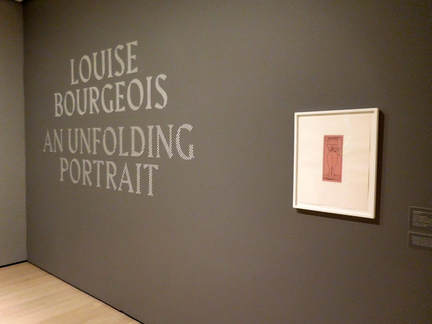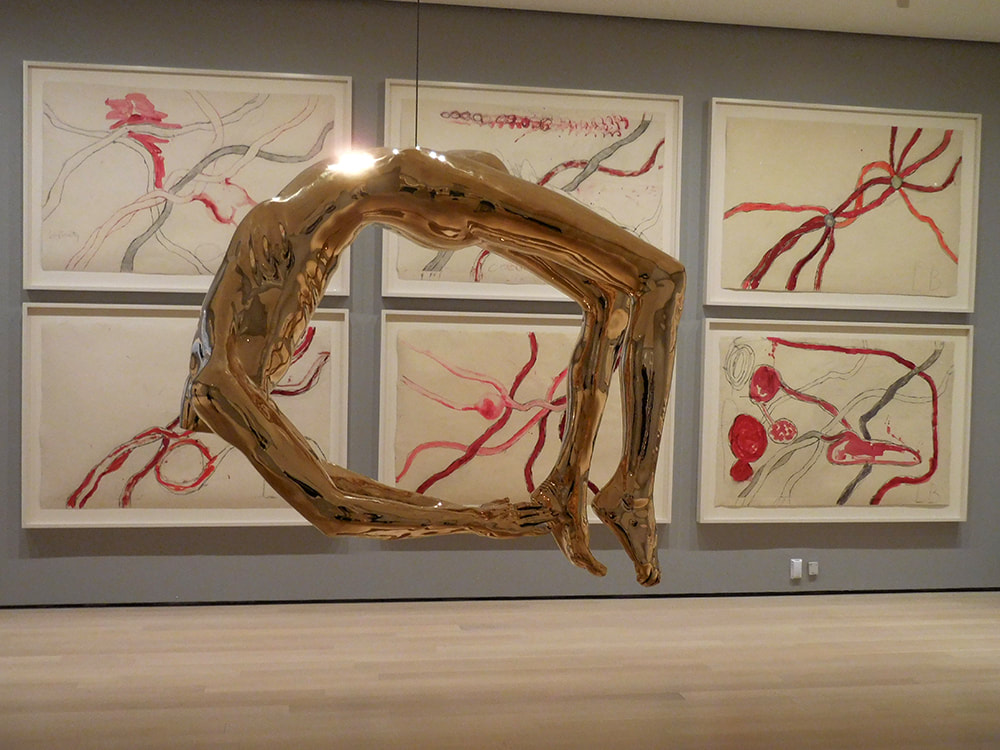 Louise Bourgeois is best known for her giant sculptures of spiders. However, as seen in “Louise Bourgeois: An Unfolding Portrait” at New York's Museum of Modern Art, there was more to Bourgeois' work than spiders. Bourgeois was born in 1911 in Paris, France. Her family operated a gallery that sold tapestries where they all worked. The father concentrated on the commercial aspects of the business while her mother, with Louise's assistance, worked on restoring the tapestries. It was not a happy family. Her father was a philanderer and abused Louise. Her mother ignored her father's infidelities and focused on providing a nurturing environment for her children. The emotions Louise experienced then were to influenced her art throughout her career. Indeed, her spider sculptures were a tribute to her mother reflecting qualities of reliability, protection and industriousness. After her mother's death, Bourgeois began to study art in 1930s Paris. She also came into contact with many of the artists working in Paris at that time including the Surrealists. To help generate some income, she opened a print shop next to the family tapestry gallery. There she met American art historian Robert Goldwater. They were married in 1938 and moved to New York City. In America, Bourgeois studied at the Art Students League of New York. During this period, the League was an artistic epicenter where important artists and artists who would soon become important congregated both as teachers and students. Through the League and her husband's contacts, she came into contact with people such as Jackson Pollock, Mark Rothko, and Willem de Kooning. At the same time, Bourgeois' work was becoming recognized. By 1982, she was so established that she had her first retrospective exhibit at MOMA, the first woman artist to have such an exhibition. She continued to produce art until her death in 2010. Bourgeois used her art to explore her emotions, sexuality and as a means of resolving conflicts. Thus, one can see her returning to certain topics repeatedly in her work. The exhibit has been arranged around a number of themes. For example, one theme is architecture. Bourgeois liked the stability and order of buildings - - a stark contrast to the dysfunctional environment in which she grew up. Another theme is fabric, works made from cloth. Again, this echoes back to her early days in the tapestry gallery. Although there are some sculptures in the exhibit, most of the 300 works are prints and drawings. The prints are particularly instructive. In making a print, Bourgeois would first make an image on a plate. After seeing a print the plate, she would make changes to the plate and print again. This process of printing the plate and then making changes would continue until she had the final image that she wanted to publish. Since the interim prints were saved, you can see how her thinking evolved. In addition, there is significant variety within the various series. For example, some of the prints have both black and white and color versions. The viewer can decide for himself or herself which version of the image speaks best. It is not necessarily the version selected as the final one by the artist. Comments are closed.
|
AuthorRich Wagner is a writer, photographer and artist. Archives
November 2018
Categories
All
|

 RSS Feed
RSS Feed